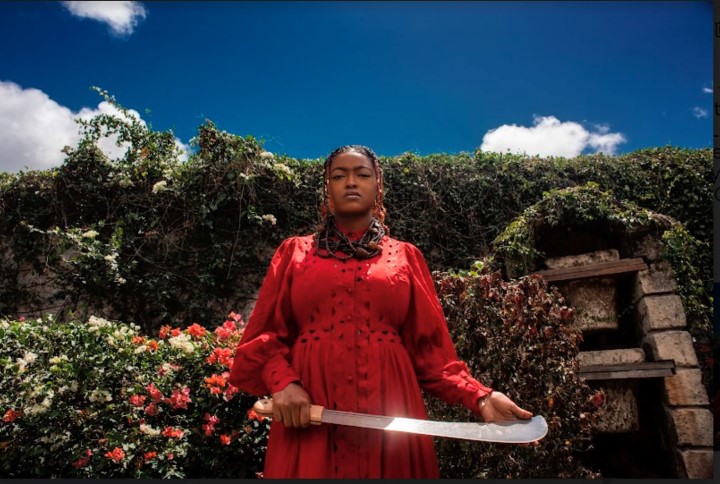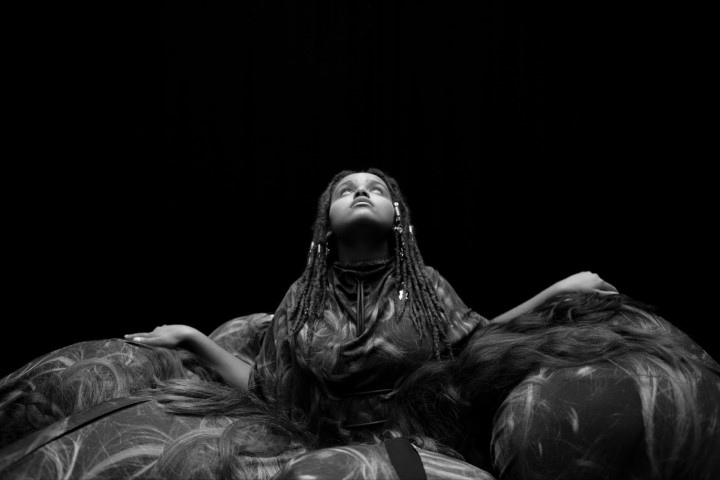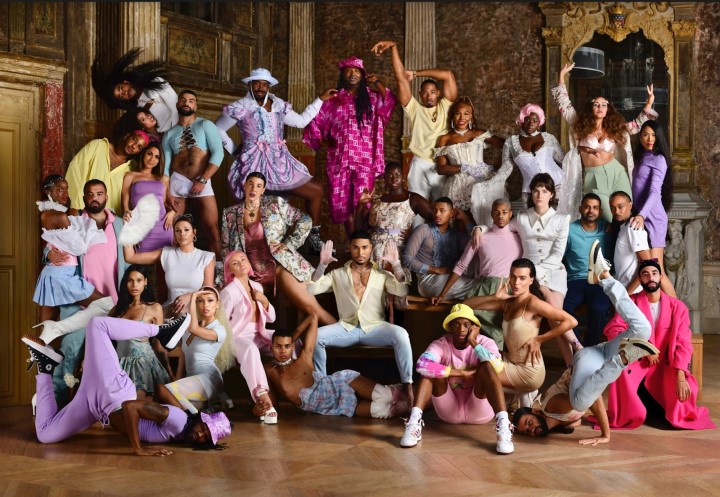Edinburgh Art Festival (EAF) is set to bring culture and community to the capital city’s unique spaces, as the UK’s largest festival of visual arts returns for its nineteenth edition. Under the new direction of Kim McAleese, in her first curated programme, explore exhibitions, events and performances across Scotland’s capital between the new dates of 11–27 August 2023. EAF also delighted announce writer and broadcaster Gemma Cairney as new Chair for their board, and Beth Bate, Director of Dundee Contemporary Arts, as Vice-Chair. The new dates, for the UK’s biggest visual arts festival, allow for an exciting and full three weeks, aligning with other festivals in the city.
From queer histories in brutalist tower blocks; to tracing peace lines and borders through sound, moving image and music, and the festival’s continuing commitment to support structures, the 2023 programme features artists, thinkers, writers and performers who move through this world deeply connected to feminist and queer practice. This may take various forms: an opera; a poem; the sound of a ricochet along a peace wall; a newspaper excerpt; a bodily gesture; a warming meal.
The full EAF programme will be published later in Spring and the first EAF projects and city-wide collaborations can today be announced as follows.
Sean Burns’s Dorothy Towers is the story of the legendary Clydesdale and Cleveland Towers, two residential blocks in the centre of Birmingham, UK. Completed in 1971 as a social housing development and located adjacent to the city’s Gay Village, the towers’ proximity to the community means they have long been a haven for LGBTQ+ people. The 16mm film opens a space to reflect on the complex relationship between architecture, community and memory. It features testimonials from current and past residents and explores ideas of queer kinship and inheritance alongside experiences of HIV in the 1980s and ’90s. In Edinburgh, the work will catalyse a series of discussions and events tracing the themes present in the work to concurrent histories and realities in Edinburgh.
History of the Present will see Northern Irish writer Maria Fusco collaborate with Scottish artist film-maker Margaret Salmon and composer Annea Lockwood, on a hybrid opera on stage and screen that will be performed live during Edinburgh Art Festival in 2023. It is a new experimental opera-film forefronting working-class women’s voices to ask: who has the right to speak and in what way? Layering sociological, cultural, and political themes from the recent history of Northern Ireland, the work exercises voice, breath and field-recording composition through a range of film techniques and operatic articulations, amplifying marginalised stories. Made on 35mm and SD video in the streets of Belfast, the Royal Opera House and the Ulster Museum, History of the Present observes how defensive architecture defines movement to enforce intersectional histories and identities within daily experiences in conflict and post-conflict zones. Written and co-directed by Maria Fusco, who grew up beside a peaceline in Belfast during The Troubles, the work commemorates the 25th anniversary of The Good Friday Agreement. This will be the Scottish performance premiere.

Collaborative commissions with partner galleries across Edinburgh include working with National Galleries of Scotland to support a new performance by Alberta Whittle. This will coincide with the Scotland + Venice selected artist’s major solo exhibition, create dangerously, at the Scottish National Gallery of Modern Art (Modern One).
2023 will also see the return of Platform – now in its 9th year – which celebrates early career artists working in Scotland, with the opportunity for mentorship, production and exhibition. This year’s selected artists can today be announced as Aqsa Arif, Crystal Bennes, Rudy Kanhye, and Richard Maguire and more details of their work will be revealed in Spring.
Partner galleries will present a range of exhibitions, the majority of which will be open to the public for free for the festival.
Talbot Rice Gallery present Lawrence Abu Hamdan’s film 45th Parallel, which considers structural divides in the Haskell Free Library and Opera House – a unique municipal site that straddles the jurisdictions of Canada and the United States, dividing the library collections and creating the only cross-border theatre in the world, where the audience and actors are in different countries. This is shown alongside a solo show by Jesse Jones. Jones’ The Tower calls us back to a moment of feminist possibility before the European Witch trials by channelling 13th century mystics in a durational performed installation.
Presented by Collective, Tarek Lakhrissi’s The Nerve, will resonate with the queer history of Edinburgh’s iconic Calton Hill in a newly commissioned installation combining film and sculpture. Lakhrissi works across installation, performance, film, text and sculpture, engaging with the socio-political, and aiming to create transformative narratives, or in-between spaces where the possibility of utopia is opened up. Taking inspiration from pop culture, his research on queerness, emotions, poetry, magic, spirituality, education, and empowerment creates spaces for reflection.
Delving into the ideas of space and architecture at the Fruitmarket will be Portuguese born, Berlin based artist Leonor Antunes (born Lisbon, 1972). Antunes makes space for the contemplation of modernist art, architecture and design through sculpture made and displayed with the specifics of a given place in mind. The forms and materials of her sculptures reference a history of modernism embedded in the work of its less visible protagonists; overlooked, often female, artists and designers, many of whom were immigrants in the countries in which they lived and worked. Stills, meanwhile, will display a significant solo presentation of Prague-born photographer, Markéta Luskačová (b.1944). Considered one of the most critically acclaimed Czech social photographers to date, she has photographed children in the Czech Republic, Slovakia, and also Poland since the 1990s and this aspect of her practice will be a focus in this show, her first ever solo show in Scotland. Further lens based work can be seen in The Taylor Wessing Photographic Portrait Prize, one of the most prestigious photography awards in the world, celebrating the very best in contemporary portrait photography and will take place at the Scottish National Portrait Gallery.
Considering geographies and environment, Keg de Souza will present the work of a year’s residency as part of the Royal Botanic Garden Edinburgh’s Creative Programmes. Shipping Roots is a striking exploration of colonial legacies through the movement of plant types between the UK, India and Australia transforming Inverleith House into a series of installations immersing visitors in sound, plants and play. Rising Tide, meanwhile, will showcase artistic responses to climate change in Oceania at the National Museum of Scotland. To the West of the city, Jupiter Artland will host Lindsey Mendick as the artist for their 2023 season. Lindsey Mendick’s work is one of confession, where taboo topics and uncomfortable truths are revealed with candour and humour. Jupiter Artland will also host a free Edinburgh Art Festival festival day for all the family, on Saturday 19 August. Meanwhile, at Edinburgh Sculpture Workshop, a new presentation by Glasgow based Adam Lewis Jacob will be displayed and artist Christian Noelle Charles presents WHAT A FEELING! (Act One) at Edinburgh Printmakers. This unique presentation of new screen prints by Charles is the first part of an exploration project discussing the topics of racial identity, inequality and care through the Black Female Lens.

Partners exhibitions will also include the largest yet show of work by Grayson Perry covering his 40-year career, taking place at the Royal Scottish Academy, organised by the National Galleries of Scotland. Perry has gone from taking pottery evening classes to winning the Turner Prize, presenting television programmes on Channel 4 and writing acclaimed books. Pottery allowed him the opportunity to indulge his fascination with sex, Punk, and counterculture, amongst other things, in the most unlikely and polite of artforms. Today he is one of Britain’s most celebrated artists and cultural figures. A new exhibition at the National Museum of Scotland will deconstruct the little black dress, examining the radical power of the colour black in fashion. From design classics to cutting-edge catwalk creations, Beyond the Little Black Dress will bring together more than 60 striking looks from collections and designers around the world.
Meanwhile, a major retrospective of one of the UK’s leading figurative painters, Peter Howson, opens at Edinburgh’s City Art Centre. In 1993 he was appointed British War Artist for Bosnia. The exhibition will bring together around 100 works spanning the artist’s career, many never seen before in Scotland.
At Dovecot, The Fleming Collection will present Scottish Women Artists – 250 Years of Challenging Perception, alongside Scottish Landscapes: A New Generation, featuring diverse and dynamic work being produced by new Scottish art school graduates, curated by Siobhan McLaughlin. Wonder Women will take place at The Scottish Gallery; a major memorial celebration to the late Dame Elizabeth Blackadder RA, RSA, RSW (1931–2021). In Bodil Manz at 80, they will showcase a new body of work from the internationally acclaimed Danish ceramicist. Alongside, The Early Years, will be a rare opportunity to see the archive work from Wendy Ramshaw, CBE, RDI (1939-2018), an international champion of modern jewellery. Arusha Gallery will present new work by three emerging female artists – Plum Cloutman, Georg Wilson and Zayn Qahtani – in celebration of the festival, and a show this summer at Ingleby by Andrew Cranston will include a selection of new large scale and small scale paintings.











